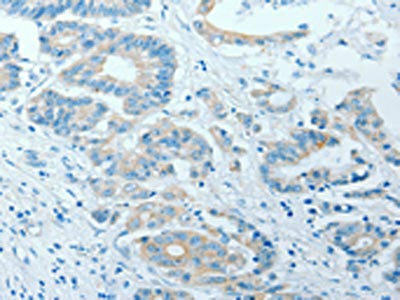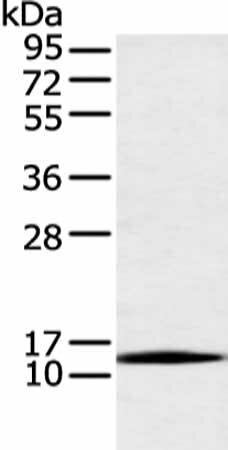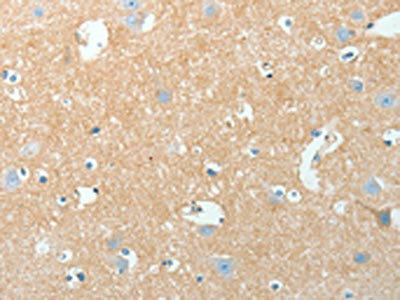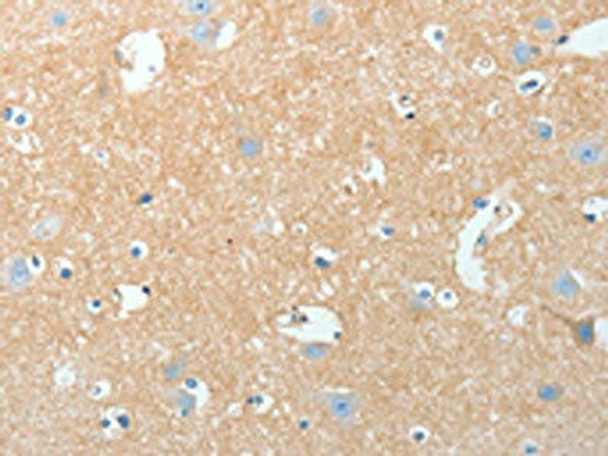Description
AKAP7 Antibody (PACO15357)
The AKAP7 Polyclonal Antibody (PAC015357) is a valuable tool for researchers studying AKAP7, a scaffolding protein that plays a key role in signal transduction and cell communication. This antibody, produced in rabbits, exhibits high specificity and sensitivity towards human samples, making it an excellent choice for Western blot experiments. By binding to the AKAP7 protein, this antibody enables researchers to detect and analyze AKAP7 expression in a variety of cell types, making it a crucial tool for studies in cell signaling pathways and molecular biology.AKAP7, also known as A-kinase anchor protein 7, is involved in regulating the activity of protein kinase A (PKA) and other signaling molecules, contributing to various cellular processes such as gene expression, cell proliferation, and metabolism.
Understanding the role of AKAP7 is essential for unraveling the complexities of cellular signaling and developing potential therapeutic targets for diseases like cancer, cardiovascular disorders, and neurological conditions. By using the AKAP7 Polyclonal Antibody, researchers can delve deeper into the functions of AKAP7 and its implications in health and disease.
| Antibody Name: | AKAP7 Antibody (PACO15357) |
| Antibody SKU: | PACO15357 |
| Size: | 50ul |
| Host Species: | Rabbit |
| Tested Applications: | ELISA, WB, IHC |
| Recommended Dilutions: | ELISA:1:1000-1:2000, WB:1:200-1:1000, IHC:1:15-1:50 |
| Species Reactivity: | Human |
| Immunogen: | Fusion protein of human AKAP7 |
| Form: | Liquid |
| Storage Buffer: | -20°C, pH7.4 PBS, 0.05% NaN3, 40% Glycerol |
| Purification Method: | Antigen affinity purification |
| Clonality: | Polyclonal |
| Isotype: | IgG |
| Conjugate: | Non-conjugated |
 | The image on the left is immunohistochemistry of paraffin-embedded Human colon cancer tissue using PACO15357(AKAP7 Antibody) at dilution 1/15, on the right is treated with fusion protein. (Original magnification: x200). |
 | Gel: 12%SDS-PAGE, Lysate: 40 μg, Lane: Human bladder carcinoma tissue, Primary antibody: PACO15357(AKAP7 Antibody) at dilution 1/200 dilution, Secondary antibody: Goat anti rabbit IgG at 1/8000 dilution, Exposure time: 30 seconds. |
 | The image on the left is immunohistochemistry of paraffin-embedded Human brain tissue using PACO15357(AKAP7 Antibody) at dilution 1/15, on the right is treated with fusion protein. (Original magnification: x200). |
| Background: | This gene encodes a member of the A-kinase anchoring protein (AKAP) family, a group of functionally related proteins that bind to a regulatory subunit (RII) of cAMP-dependent protein kinase A (PKA) and target the enzyme to specific subcellular compartments. AKAPs have a common RII-binding domain, but contain different targeting motifs responsible for directing PKA to distinct intracellular locations. |
| Synonyms: | A kinase (PRKA) anchor protein 7 |
| UniProt Protein Function: | AKAP7 iso1: Probably targets cAMP-dependent protein kinase (PKA) to the cellular membrane or cytoskeletal structures. The membrane- associated form reduces epithelial sodium channel (ENaC) activity, whereas the free cytoplasmic form may negatively regulate ENaC channel feedback inhibition by intracellular sodium. 3 isoforms of the human protein are produced by alternative splicing. |
| UniProt Protein Details: | Protein type:Adaptor/scaffold Chromosomal Location of Human Ortholog: 6q23.2 Cellular Component: cytosol Molecular Function:protein binding; protein kinase A binding Biological Process: protein localization |
| NCBI Summary: | This gene encodes a member of the A-kinase anchoring protein (AKAP) family, a group of functionally related proteins that bind to a regulatory subunit (RII) of cAMP-dependent protein kinase A (PKA) and target the enzyme to specific subcellular compartments. AKAPs have a common RII-binding domain, but contain different targeting motifs responsible for directing PKA to distinct intracellular locations. Three alternatively spliced transcript variants encoding different isoforms have been described.[provided by RefSeq, Apr 2011] |
| UniProt Code: | O43687 |
| NCBI GenInfo Identifier: | 25108878 |
| NCBI Gene ID: | 9465 |
| NCBI Accession: | O43687.4 |
| UniProt Secondary Accession: | O43687,Q5TBR9, Q5TBS0, Q9HCZ8, Q9P0G4, A8K2K6, |
| UniProt Related Accession: | Q9P0M2,O43687 |
| Molecular Weight: | 11kDa |
| NCBI Full Name: | A-kinase anchor protein 7 isoforms alpha and beta |
| NCBI Synonym Full Names: | A-kinase anchoring protein 7 |
| NCBI Official Symbol: | AKAP7 |
| NCBI Official Synonym Symbols: | AKAP15; AKAP18 |
| NCBI Protein Information: | A-kinase anchor protein 7 isoform gamma; A-kinase anchor protein 7 |
| UniProt Protein Name: | A-kinase anchor protein 7 isoforms alpha and beta |
| UniProt Synonym Protein Names: | A-kinase anchor protein 18 kDa; AKAP 18; Protein kinase A-anchoring protein 7 isoforms alpha/beta; PRKA7 isoforms alpha/beta |
| Protein Family: | A-kinase anchor protein |
| UniProt Gene Name: | AKAP7 |
















